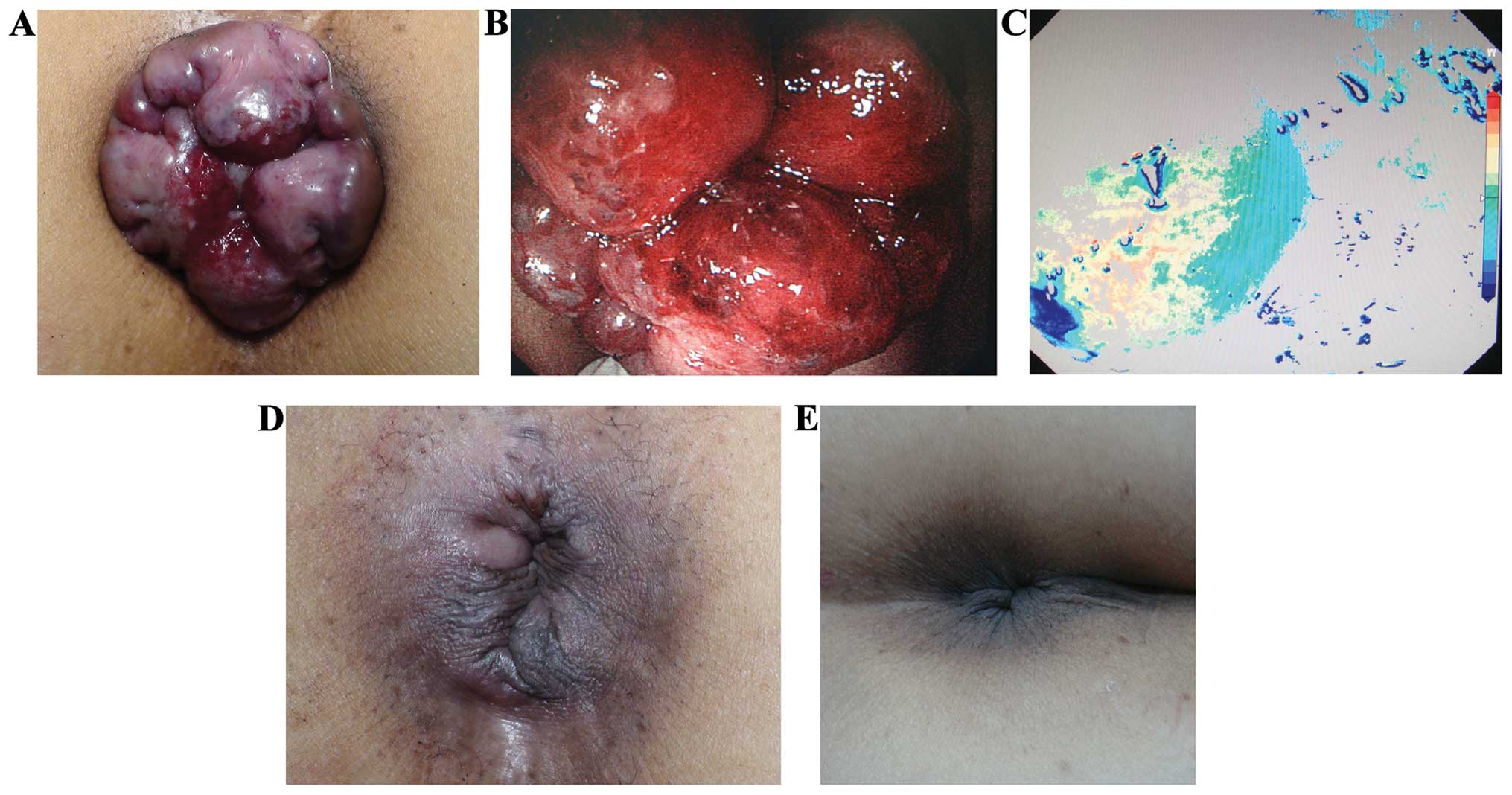Application of ‘tying, binding and fixing operation’ in surgical treatment of severe mixed hemorrhoids
- Authors:
- Published online on: May 12, 2016 https://doi.org/10.3892/etm.2016.3339
- Pages: 1022-1028
-
Copyright: © Huang et al. This is an open access article distributed under the terms of Creative Commons Attribution License.
Metrics: Total
Views: 0 (Spandidos Publications: | PMC Statistics: )
Total PDF Downloads: 0 (Spandidos Publications: | PMC Statistics: )
Abstract
The aim of the present study was to examine the clinical value of ‘tying, binding and fixing operation’ in treating severe mixed hemorrhoids. A total of 160 patients with severe mixed hemorrhoids were selected and randomly divided into the experimental (n=80) and control (n=80) groups. The groups were treated using ‘tying, binding and fixing operation’ and Doppler ultrasound-guided hemorrhoidal artery ligation (DG‑HAL), respectively. The results showed that the average operative time of the experimental group (35.57±6.17) was significantly higher than that of the control group (12.73±4.92). There was no significant difference of blood loss during the operation between the two groups (P>0.05). There was also no significant difference in improving the hemorrhage symptom between the two groups (P>0.05). In addition, concerning improvement of prolapse symptoms and reduction of the volume of hemorrhoids, the experimental group were significantly improved as compared to the control group. No anal function damage in the two groups was identified, and the length of stay in hospital for the two groups was not significantly different (P>0.05). However, the hospitalization cost in the experimental group (5,334.77±875.54) was significantly lower than that of the control group (8,551.81±1,806.54) and satisfaction degree was significantly higher than that of the control group. The incidences of perianal pain, anal edema and dysuria between two groups were not significantly different (P>0.05). There were 10 cases of secondary hemorrhage and 18 cases of infection in the experimental group, and 12 cases of secondary hemorrhage and 14 cases of infection in the control group, although the differences between the two groups were not statistically significant (P>0.05). The incidence rate of local hematoma in the experimental group (1.2%) was significantly lower than that in the control group (15.0%). The recurrence rate of the control group (22.5%) was also significantly higher than that of the experimental group (2.5%). In conclusion, tying, binding and fixing operation is a promising method that may be employed for the treatment of sever mixed hemorrhoids, and it is better than DG‑HAL in improving the prolapse and reducing the volume of hemorrhoids.











